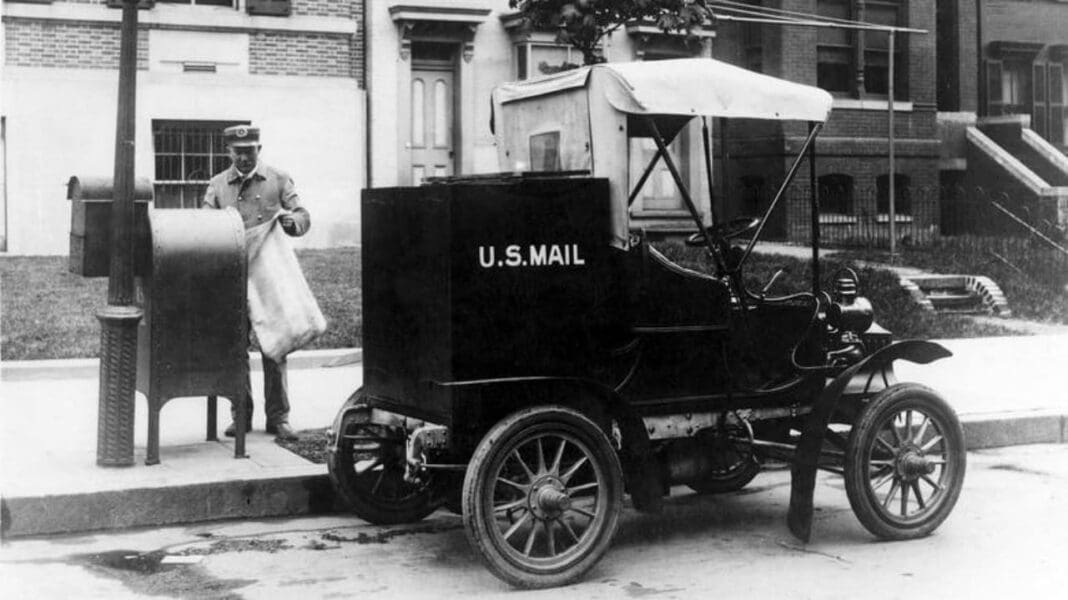The U.S. Postal Service’s delivery of envelopes and parcels had humble beginnings. But much as the automobile transformed everyday Americans’ means of travel, it also greatly enhanced the Post Office’s ability to efficiently deliver mail.
Just before the turn of the 20th century, an experimental horseless mail wagon made by the Winton Company of Cleveland got a test run, during snowy conditions of all things. The route was a total of 22 miles, and featured 126 mailboxes. While the typical time for a horse-powered wagon was six hours, the automobile was able to perform the same job in just 2½. And this was just the start of the agency’s vehicle progression.
By 2020, the Postal Service counted around 133,000 rural carriers and delivery persons across 79,500 rural tracks alone, and it’s grown since. To reduce overall costs, the Postal Service employs contractors for many of these rural routes, and they use their own vehicles. While the Postal Service must maintain and fuel its own fleet, it isn’t required to do so for carriers using their personal cars. Some city carrier assistants — temporary postal employees — also use private transport to complete their duties. A mileage reimbursement is allotted for any carriers using personal vehicles.





